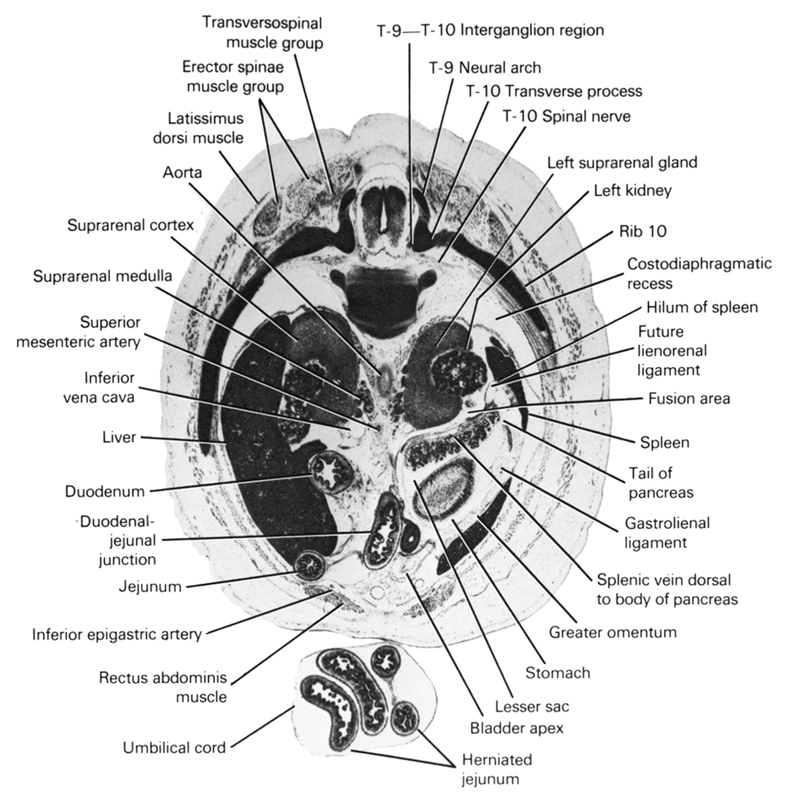
A section through the duodenal-jejunal junction, spleen and T-9–T-10 interganglion region.
Observe:
1. The apex of the bladder that is continuous with the urachus in Section 26.
2. The splenic vein passing dorsal to the body of the pancreas and the tail of the pancreas at the hilum of the spleen.
3. The lesser sac enclosed by the greater omentum.
4. The fusion area between the body of the pancreas and the left kidney and suprarenal gland.
5. The superior mesenteric artery near its origin from the aorta.
Keywords: T-10 spinal nerve, T-10 transverse process, T-9 / T-10 interganglion region, T-9 neural arch, aorta, apex of urinary bladder, costodiaphragmatic recess, duodenal jejunal junction, duodenum, erector spinae muscle group, fusion area, future lienorenal ligament, gastrolienal ligament, greater omentum, herniated jejunum, hilum of spleen, inferior epigastric artery, inferior vena cava, jejunum, latissimus dorsi muscle, left kidney, left suprarenal gland, lesser sac, liver, rectus abdominis muscle, rib 10, spleen, splenic vein dorsal to body of pancreas, stomach, superior mesenteric artery, suprarenal cortex, suprarenal medulla, tail of pancreas, transversopinal muscle group, umbilical cord
Source: Atlas of Human Embryos.
